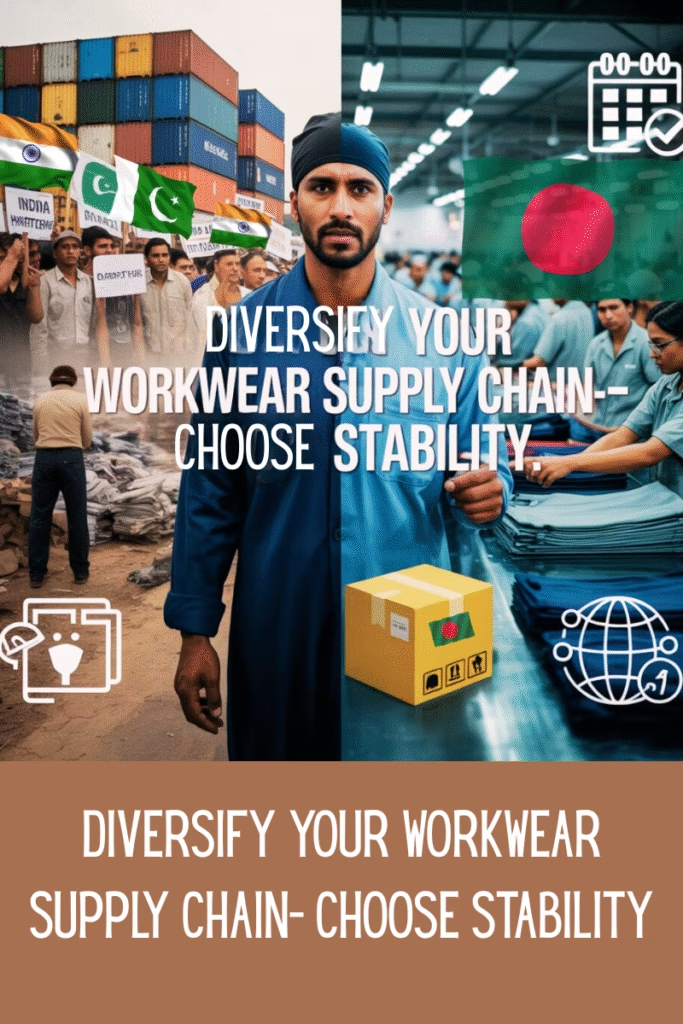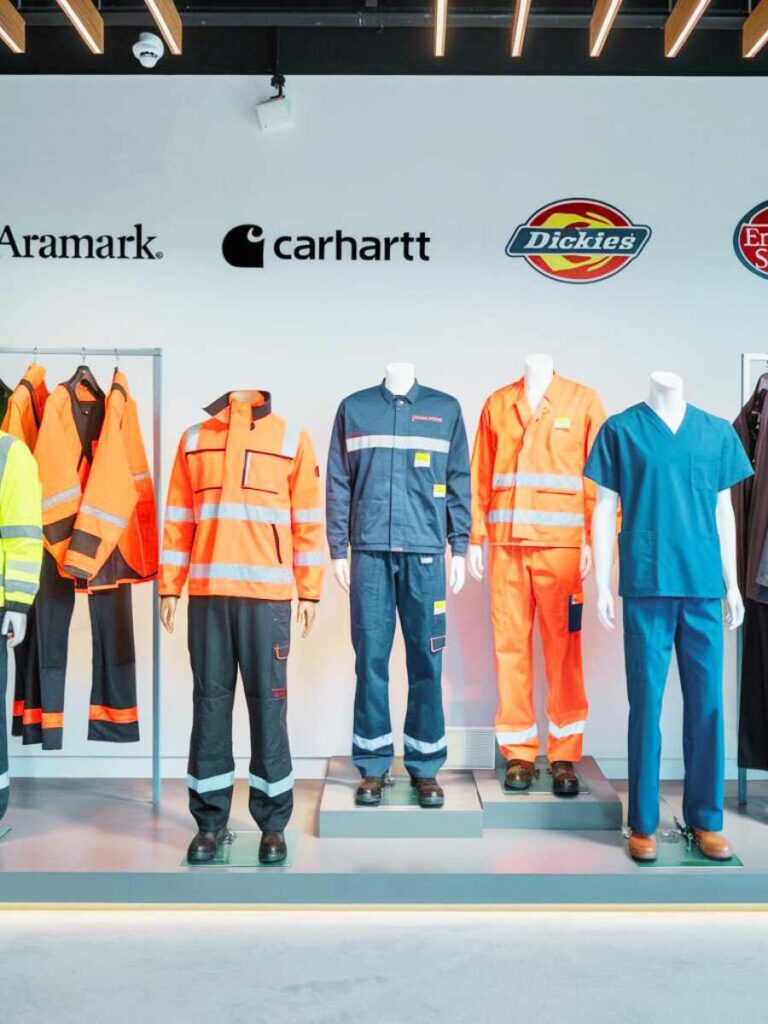In today’s unpredictable geopolitical climate, diversifying your workwear supply chain is not just a strategy—it’s a necessity. With the recent escalations between India and Pakistan, businesses relying heavily on these countries for garment manufacturing are facing uncertainties in logistics, cost, and delivery reliability. If your company sources uniforms, safety apparel, or industrial workwear, it’s time to evaluate alternative sourcing destinations. Among them, Bangladesh stands out as a stable, experienced, and cost-effective solution.
Why Workwear Brands Must Rethink Their Workwear Supply Chain
South Asia is one of the largest apparel production zones in the world. India and Pakistan, while historically strong in textile output, have become increasingly risky for international buyers due to:
Geopolitical tensions and border skirmishes
Energy crises and power shortages
Frequent strikes and political instability
Shipping disruptions at key ports
These factors have significantly impacted the workwear supply chain, particularly for brands that rely on just-in-time (JIT) inventory models. As buyers reassess their sourcing risk exposure, many are turning to Bangladesh for a more stable and scalable solution.
Bangladesh: A Proven Leader in Workwear Manufacturing
Bangladesh has quietly evolved into a global powerhouse for garment production, especially in the workwear and uniforms sector. With over 4 million skilled garment workers and strong government support, Bangladesh is well-equipped to handle high-volume, compliance-driven orders.
Key Advantages of Sourcing Workwear from Bangladesh:
Cost Efficiency: Among the lowest labor costs globally.
Large Workforce: Over 4 million workers in the garment sector.
Modern Infrastructure: Upgraded ports, bonded warehouses, and efficient customs.
Compliance & Certifications: BSCI, WRAP, SEDEX, ISO-compliant factories.
Fabric Innovation: Local mills producing flame-resistant, high-visibility, and moisture-wicking fabrics.
Comparative Analysis: Bangladesh vs. India & Pakistan
| Criteria | Bangladesh | India | Pakistan |
|---|---|---|---|
| Political Stability | High | Medium | Low |
| Labor Cost | Low | Medium | Low |
| Delivery Reliability | High | Medium | Low |
| Compliance Standards | High | High | Medium |
| Skilled Workforce | Large & Experienced | Large | Medium |
| Geopolitical Risk | Low | High | High |
| Port Efficiency | High (Chittagong & Mongla) | Medium | Low |
Delivery Reliability: The Deciding Factor
For workwear buyers, timely delivery is non-negotiable. Uniform programs often follow seasonal demand, scheduled rollouts, and safety compliance deadlines. The India-Pakistan conflict has already created delays and container backlogs, putting pressure on production timelines.
On-Time Delivery Performance (%)
Bangladesh: 92%
India: 78%
Pakistan: 66%
Source: Global Apparel Logistics Index 2025
This makes Bangladesh a more dependable option for brands operating under strict procurement schedules.
Workforce Stability and Skilled Labor
A consistent and well-trained workforce is essential for producing high-quality workwear, especially for technical garments like flame-resistant coveralls, reflective safety vests, and industrial uniforms.
Garment Sector Workforce (in millions)
Bangladesh: 4.2 million
India: 3.5 million (workwear-specific: lower)
Pakistan: 2.2 million
Bangladesh’s workforce is not only larger but also more specialized in export-quality, compliance-heavy apparel.
Real-World Example: A U.S. Workwear Brand's Shift to Bangladesh
After facing multiple shipment delays and rising costs from their supplier in India, a mid-sized American workwear brand decided to shift 60% of their orders to Bangladesh in early 2024. Within two quarters:
Lead times dropped by 15 days
Unit costs decreased by 12%
Order fulfillment rate improved to 95%
This transition not only improved profitability but also boosted end-client satisfaction.
Sourcing Recommendations for 2025
Audit your current supply chain for risk exposure in conflict-prone regions.
Request capacity and compliance documentation from Bangladeshi manufacturers.
Conduct a trial order to evaluate production quality and communication.
Leverage FOB and CIF pricing from Chittagong and Mongla ports for better freight control.
Explore value-added services like embroidery, packaging, and direct-to-DC shipping.
Why Bengal Apparel BD is Your Ideal Workwear Partner
At Bengal Apparel BD, we specialize in end-to-end workwear manufacturing, from fabric sourcing to final shipment. Our strength lies in consistency, customization, and compliance. With buyers across the U.S., Europe, and Australia, we understand global quality expectations.
Our Product Range Includes:
High-visibility clothing
Medical Uniforms
- Hospitality Uniforms
Industrial Uniforms
Outdoor Clothing
We are ready to help brands shift sourcing safely, quickly, and profitably.
Final Thoughts: De-Risk and Diversify
The global workwear supply chain is entering a new phase where stability, transparency, and delivery reliability matter more than ever. Bangladesh offers a rare combination of affordability, experience, and geopolitical stability. As tension grows in other parts of South Asia, buyers who diversify now will be better prepared for future disruptions.
Contact Bengal Apparel BD today to discuss your sourcing needs and build a resilient supply chain that delivers.




